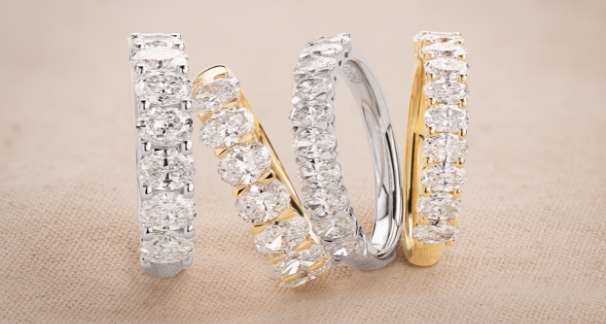In recent years, there has been a seismic shift in the diamond industry, fueled by technological advancements and shifting consumer preferences. Lab-grown diamonds, once a niche market, are now poised to revolutionize the entire diamond industry. But what exactly does the future hold for these ethically and environmentally friendly gems? Let’s delve deeper into the evolution of lab-grown diamonds and explore their promising future.
Introduction
The future of lab grown diamonds, also known as synthetic or cultured diamonds, are created in controlled laboratory environments rather than mined from the earth. Unlike their natural counterparts, which form over millions of years deep within the earth’s mantle, lab-grown diamonds are produced using advanced technology that replicates the natural diamond-growing process in a matter of weeks.
History of Lab-Grown Diamonds
The concept of creating diamonds in a laboratory dates back to the mid-20th century, with early experiments yielding small, imperfect diamonds. However, significant breakthroughs in the 21st century have propelled the industry forward, leading to the production of high-quality, gem-grade diamonds.
The Science Behind Lab-Grown Diamonds
Lab-grown diamonds are created through two primary methods: High Pressure-High Temperature (HPHT) and Chemical Vapor Deposition (CVD). In the HPHT process, carbon is subjected to extreme pressure and temperature conditions, mimicking the natural diamond formation process. In contrast, CVD involves the deposition of carbon atoms onto a substrate, resulting in the growth of diamond crystals layer by layer.
Comparison with Mined Diamonds
One of the key advantages of lab-grown diamonds is their minimal environmental impact compared to mined diamonds. Traditional diamond mining is associated with deforestation, habitat destruction, and significant carbon emissions. In contrast, lab-grown diamonds require significantly fewer resources and have a smaller carbon footprint.
Quality and Characteristics
Lab-grown diamonds exhibit the same chemical and physical properties as natural diamonds, including hardness, brilliance, and fire. They are graded using the same criteria as mined diamonds, including the four Cs: clarity, color, cut, and carat weight. However, lab-grown diamonds may have fewer inclusions and a more consistent quality than their natural counterparts.
Market Trends
The demand for lab-grown diamonds has been steadily increasing in recent years, driven by growing consumer awareness of ethical and environmental issues. According to industry reports, the lab-grown diamond market is projected to grow significantly in the coming years, capturing a larger share of the overall diamond market.
Advantages of Lab-Grown Diamonds
In addition to their ethical and environmental benefits, lab-grown diamonds offer several advantages over mined diamonds. They are typically more affordable, making them accessible to a broader range of consumers. Furthermore, lab-grown diamonds can be customized in terms of size, shape, and color, allowing for greater flexibility in design.
Challenges and Limitations
Despite their potential, lab diamonds still face challenges, particularly in terms of consumer perception and production scalability. Some consumers remain skeptical about the quality and value of lab-grown diamonds compared to natural diamonds. Additionally, scaling up production to meet growing demand while maintaining quality standards presents logistical challenges for manufacturers.
Applications Beyond Jewelry
Lab-grown diamonds are not limited to the jewelry industry; they also have applications in various other fields. Their hardness and durability make them ideal for use in industrial cutting tools, electronics, and scientific research.
Sustainability and Environmental Benefits
One of the most significant advantages of lab-grown diamonds is their sustainability. By eliminating the need for diamond mining, lab-grown diamonds help reduce environmental degradation and conserve natural resources. Additionally, the water usage and carbon emissions associated with diamond mining are significantly lower for lab-grown diamonds.
Consumer Awareness and Education
Educating consumers about the benefits of lab-grown diamonds is essential for driving further adoption. Dispelling myths and misconceptions about lab-grown diamonds, such as concerns about their quality or authenticity, can help build trust and confidence among consumers.
Regulatory Landscape
As the lab-grown diamond industry continues to grow, regulatory oversight and certification standards are becoming increasingly important. Ensuring transparency and traceability throughout the supply chain is crucial for maintaining consumer trust and confidence in lab-grown diamonds.
Future Innovations
The future of lab-grown diamonds looks promising, with ongoing advancements in technology driving innovation in the industry. Researchers are exploring new methods for diamond synthesis and developing more efficient production techniques, which could lead to further improvements in quality and affordability.
Investment Potential
For investors, lab-grown diamonds represent an attractive opportunity. With the market projected to grow rapidly in the coming years, investing in lab-grown diamond manufacturers or retailers could yield significant returns.
Conclusion
In conclusion, the future of lab-grown diamonds is bright. With their ethical, environmental, and economic advantages, lab-grown diamonds are poised to disrupt the traditional diamond industry and become the diamond of choice for a new generation of consumers.

